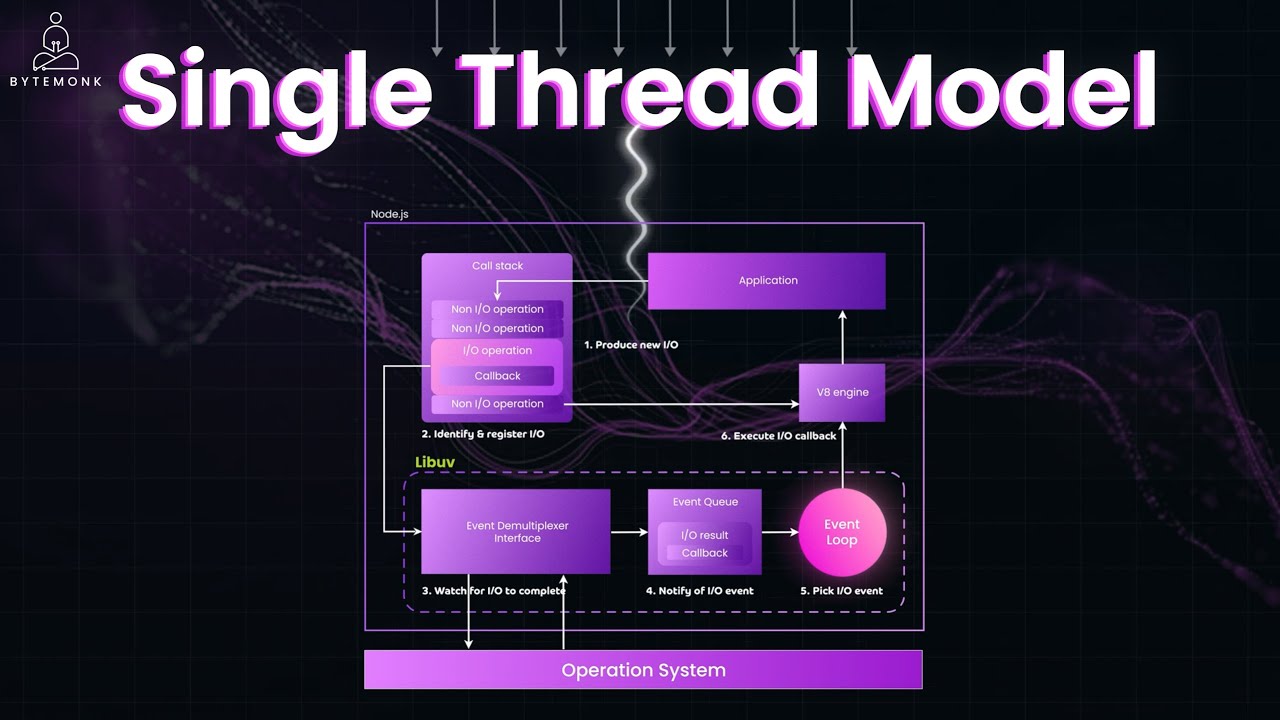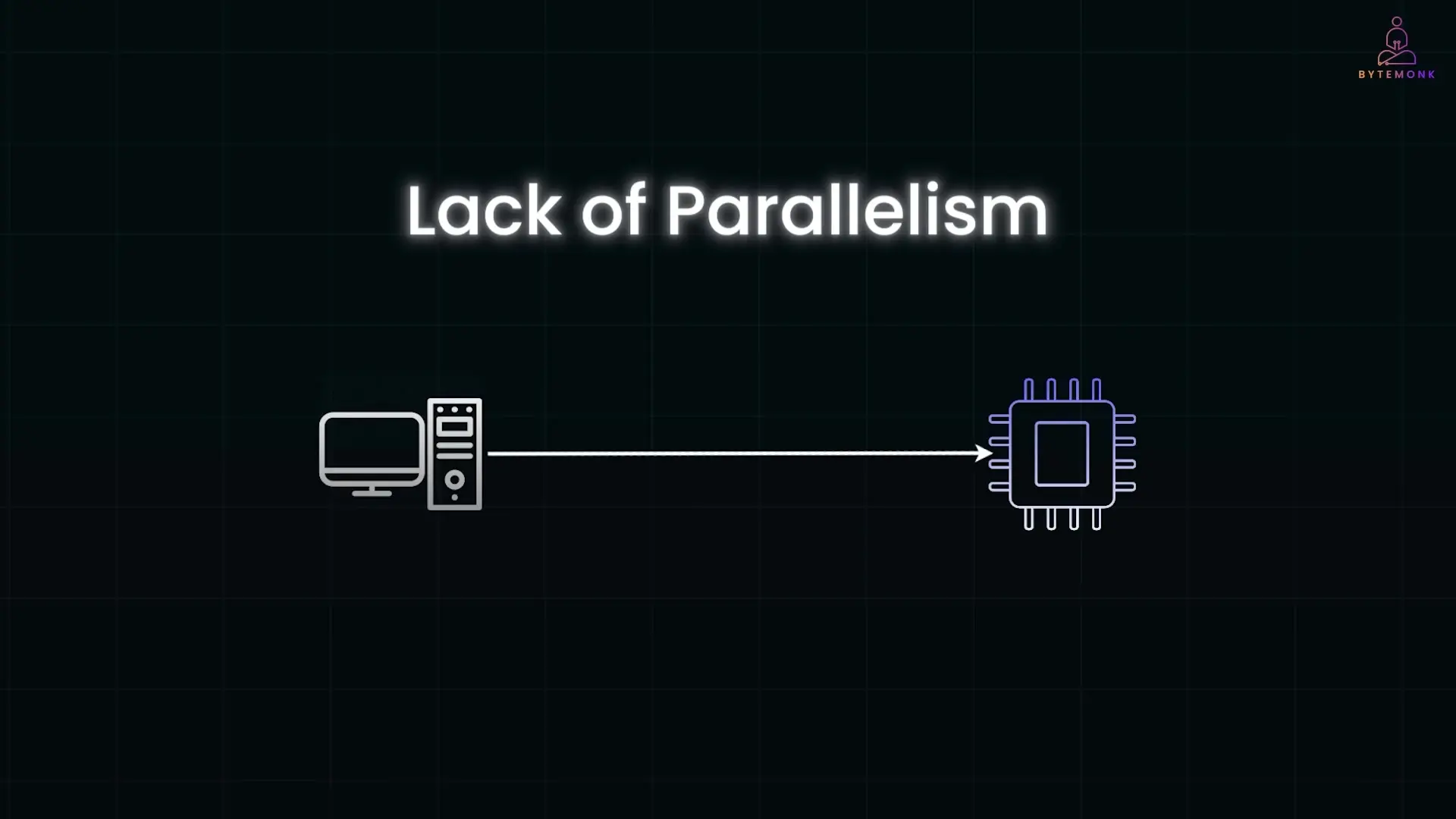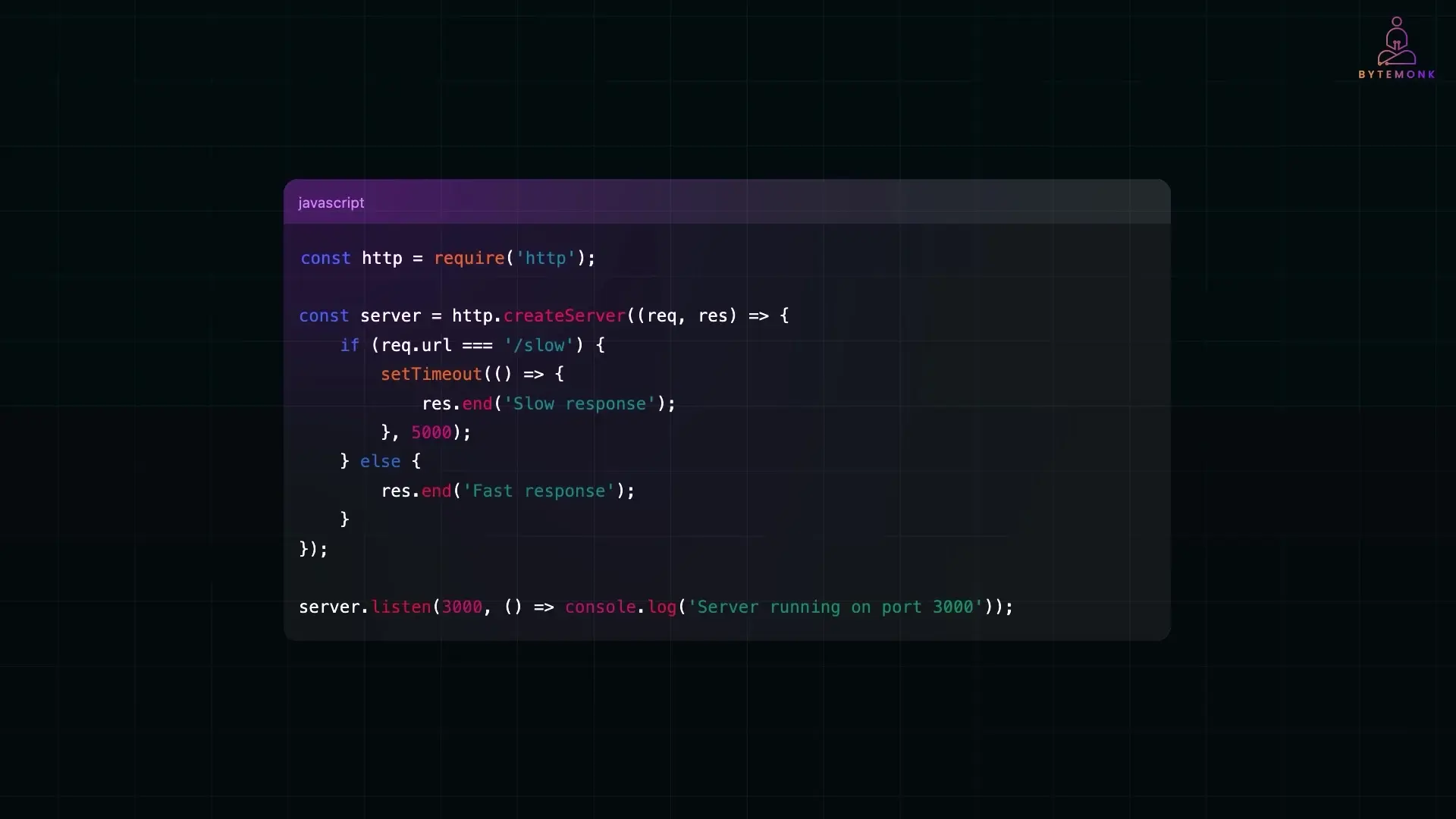
One of the most fundamental aspects of Node.js is its single-threaded execution model, which often raises questions about how it can efficiently handle multiple concurrent operations. In this article, we'll explore the genius behind Node.js's architecture, how it differs from traditional multi-threaded servers, and why it's so effective for modern web applications.
Understanding Processes and Threads
Before diving into Node.js's single-threaded model, it's essential to understand two fundamental computing concepts: processes and threads.
- A process is a running program with its own memory space and resources (like a browser, text editor, or server)
- A thread is a smaller unit inside a process that executes code and shares memory within the same process
Think of it like a restaurant analogy: the restaurant (process) has all the resources—kitchen, tables, menus—while waiters (threads) handle customer orders. In multi-threaded systems, multiple waiters can handle orders concurrently. But in a single-threaded model like Node.js, there's only one waiter handling everything.
How JavaScript Executes: The Call Stack
JavaScript, whether in browsers or Node.js, uses a call stack to track function execution. When a function is called, it's added to the stack; when it returns, it's removed. This sequential processing works well for simple tasks but presents challenges for operations that take time to complete.
function b() {
console.log('Inside function B');
a(); // Function A is called inside B
console.log('B completed');
}
function a() {
console.log('Inside function A');
}
b(); // Execution starts hereIn this example, function B is added to the stack first, then function A is added when called inside B. Function A executes and is removed from the stack, then B continues execution and completes.
The Limitations of a Single-Threaded Model
The single-threaded model in Node.js comes with inherent challenges that need to be addressed for efficient application performance:
- Blocking operations: Long-running tasks like heavy computations or synchronous network requests can block the thread, making the application unresponsive
- Lack of parallelism: Even on multi-core CPUs, a single-threaded application can only utilize one core at a time
- CPU-intensive operations: Tasks like video processing or cryptography can significantly slow down the entire system

console.log('Start');
// This loop will block the thread
for (let i = 0; i < 1000000000; i++) {
// Heavy computation
}
console.log('End'); // This will be delayed until the loop completesTraditional Multi-Threaded Server Model vs. Node.js
Traditional web servers like Apache use a multi-threaded approach, creating a new thread for each incoming request. While this prevents one slow request from blocking others, it has significant drawbacks when scaling:
- High memory usage as each thread requires memory allocation
- Performance bottlenecks due to excessive context switching between threads
- Limited scalability when handling thousands of concurrent connections
Node.js takes a fundamentally different approach. Instead of creating a new thread per request, it uses a single thread with an event-driven, non-blocking I/O model. This allows it to handle multiple concurrent connections efficiently without getting stuck on slow operations.
The Secret Weapon: Node.js Event Loop
At the core of Node.js's ability to handle concurrency while being single-threaded is the event loop. The event loop is a mechanism that allows Node.js to perform non-blocking operations despite using a single thread by offloading operations to the system kernel whenever possible.
Think of the event loop as a smart assistant that keeps checking if new work is available and efficiently switches between tasks rather than waiting for one task to finish before starting another.
The Role of the Event Demultiplexer
When Node.js receives a request involving I/O operations (like reading a file, making a database call, or fetching data from an API), it doesn't block the event loop. Instead, it delegates the task to an event demultiplexer.
The demultiplexer is like a restaurant manager who takes multiple orders simultaneously and notifies waiters when food is ready, rather than having waiters wait by the kitchen for each dish to be prepared.
console.log('Start');
// This doesn't block the thread
fs.readFile('large-file.txt', (err, data) => {
if (err) throw err;
console.log('File read');
});
console.log('End'); // This executes immediately without waiting for file readingLibuv: The Power Behind Node.js Asynchronous Operations

Libuv is a C++ library that powers Node.js, enabling its asynchronous event-driven architecture. It works behind the scenes to handle I/O operations efficiently across different operating systems. When the event demultiplexer receives an I/O task, it passes it to libuv, which decides how to handle it:
- For asynchronous operations like network requests, it simply waits for a response
- For CPU-intensive operations like file system operations or cryptography, libuv offloads them to worker threads in its internal thread pool
- Once the task completes, libuv sends the result back to the event loop
This means that even though Node.js is single-threaded in its JavaScript execution, it actually leverages background worker threads for heavy tasks, making it highly efficient for I/O-driven applications.
Is Node.js Single-Threaded or Multi-Threaded?
This is a common question with a nuanced answer. Node.js uses a single-threaded event loop for executing JavaScript code, but it's not entirely single-threaded in its implementation. Through libuv, Node.js utilizes a thread pool for handling CPU-intensive operations without blocking the main thread.
So while your JavaScript code runs on a single thread, Node.js itself employs multiple threads behind the scenes to maintain performance. This hybrid approach gives Node.js the simplicity of single-threaded programming with many benefits of multi-threading.
Non-Blocking I/O in Action
Let's see how Node.js handles multiple requests in a non-blocking way with a practical example:
const http = require('http');
const server = http.createServer((req, res) => {
if (req.url === '/slow') {
// Simulating a slow operation that takes 5 seconds
setTimeout(() => {
res.writeHead(200);
res.end('Slow operation completed');
}, 5000);
} else {
// Fast operation that completes immediately
res.writeHead(200);
res.end('Fast operation completed');
}
});
server.listen(3000, () => {
console.log('Server running at http://localhost:3000/');
});In this example, if a user requests '/slow', the response takes about 5 seconds. Meanwhile, another user requesting any other endpoint gets an instant response. Even though the slow request takes time, it doesn't block the main thread, allowing other requests to be processed immediately.

When to Use Node.js Single-Threaded Model
The single-threaded model with an event loop makes Node.js particularly well-suited for certain types of applications:
- I/O-bound applications: Web servers, APIs, and microservices that primarily wait for I/O operations
- Real-time applications: Chat applications, collaboration tools, and gaming servers
- Streaming applications: Data processing pipelines and media streaming services
- Applications requiring high concurrency: Systems handling thousands of simultaneous connections
Limitations and Solutions
Despite its efficiency, Node.js's single-threaded model isn't ideal for all scenarios. CPU-intensive tasks like video processing, image manipulation, or complex calculations can still block the event loop. To address these limitations, Node.js offers several solutions:
- Worker Threads: Introduced in Node.js v10, this feature allows creating true multithreaded applications when needed
- Child Processes: Spawn separate Node.js processes to handle CPU-intensive tasks
- Clustering: Use the cluster module to create multiple Node.js processes that share the same server port
- Microservices: Split CPU-intensive operations into separate services that can be scaled independently
// Example of using worker threads for CPU-intensive tasks
const { Worker } = require('worker_threads');
function runHeavyTask(data) {
return new Promise((resolve, reject) => {
const worker = new Worker('./heavy-computation.js', {
workerData: data
});
worker.on('message', resolve);
worker.on('error', reject);
worker.on('exit', (code) => {
if (code !== 0)
reject(new Error(`Worker stopped with exit code ${code}`));
});
});
}Conclusion
Node.js's single-threaded model, enhanced by non-blocking I/O, the event loop, and libuv's thread pool, provides an elegant solution for building highly concurrent applications. By understanding how Node.js works under the hood, developers can leverage its strengths while mitigating its limitations.
While Node.js is primarily single-threaded in its JavaScript execution, it's not entirely single-threaded in implementation. This hybrid approach gives Node.js applications the simplicity of single-threaded programming with many of the performance benefits of multi-threading, making it an excellent choice for modern, scalable web applications.
Let's Watch!
Understanding Node.js Single-Threaded Model: How It Handles Concurrency
Ready to enhance your neural network?
Access our quantum knowledge cores and upgrade your programming abilities.
Initialize Training Sequence